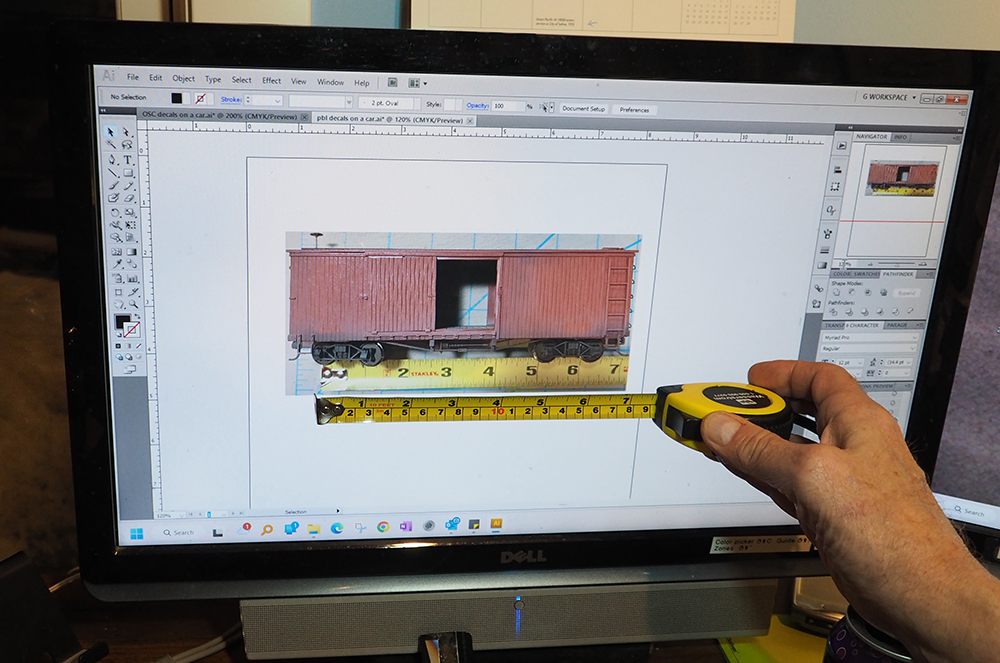
Car Swap Project Part 4: Railroad herald design class: Gerry Leone, Seth Puffer, and David Popp all model freelanced railroads, and each has created names, heralds, and graphics for their fictitious lines. The car swap project spans three different time periods during the 20th Century, so to make cars that work for each other’s railroads, […]
Read More…
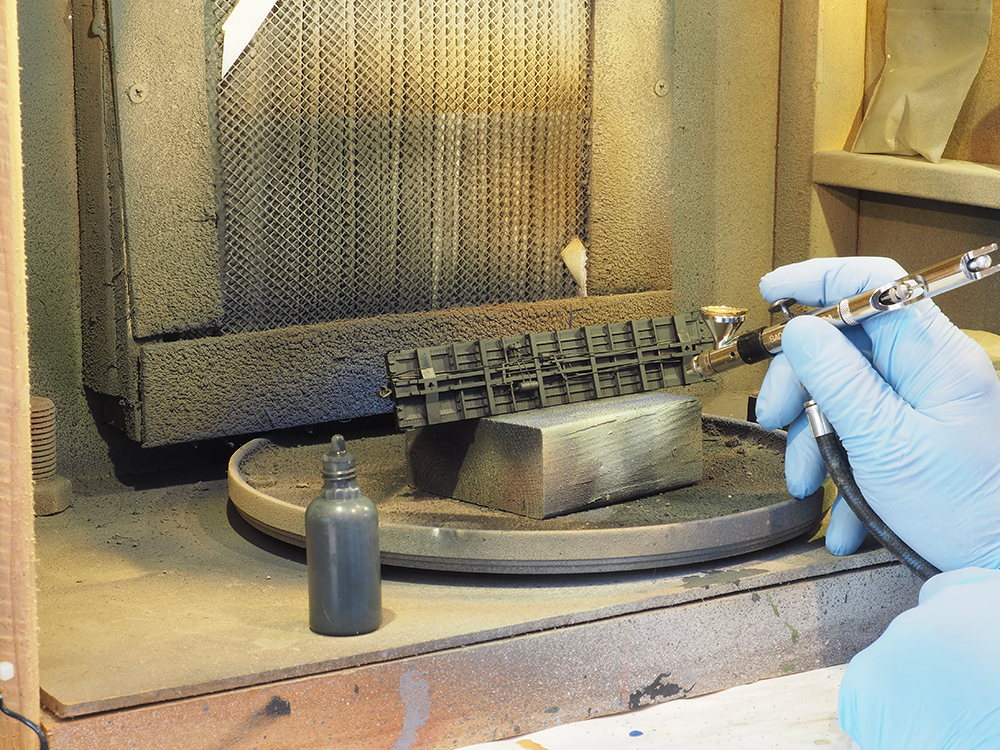
Car Swap Project Part 3: Painting plastic models: As part of trading boxcars custom decorated for each other’s layouts, modelers Gerry Leone, David Popp, and Seth Puffer do some preparation and painting of the plastic models. In this installment, the three use a variety of readily available products to add some color, or take some […]
Read More…
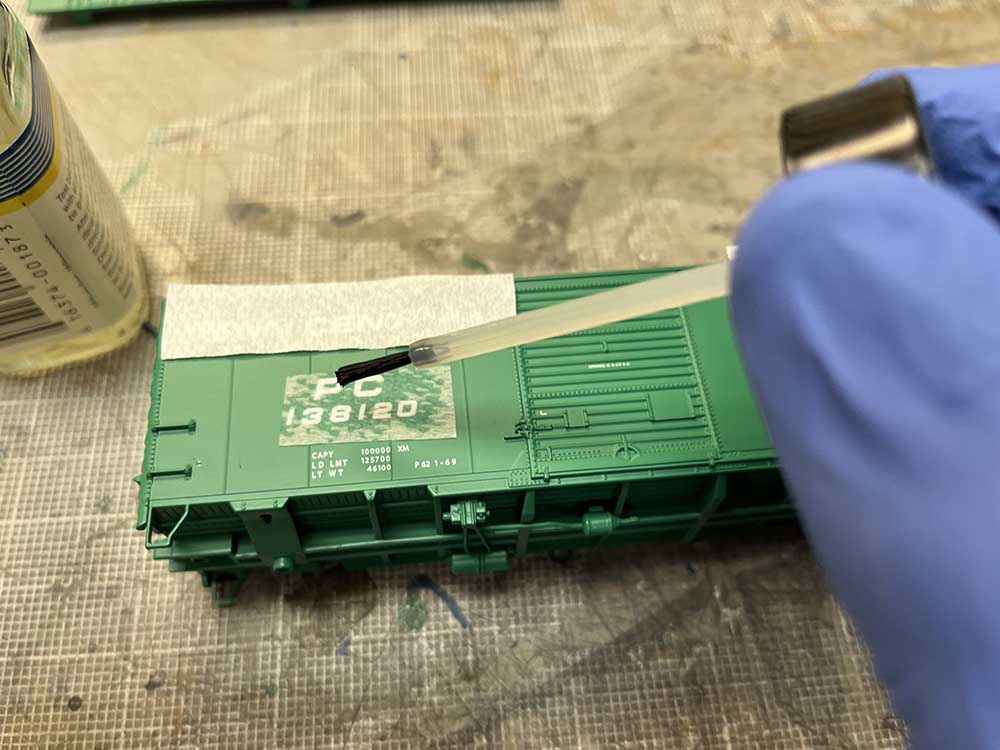
Car Swap Project Part 2: Stripping lettering from models: As explained in the first installment of the series, modelers Gerry Leone, David Popp, and Seth Puffer have decided to create custom boxcars for each other’s model railroads. This time around, David starts the real work of preparing the cars that he will use for the […]
Read More…
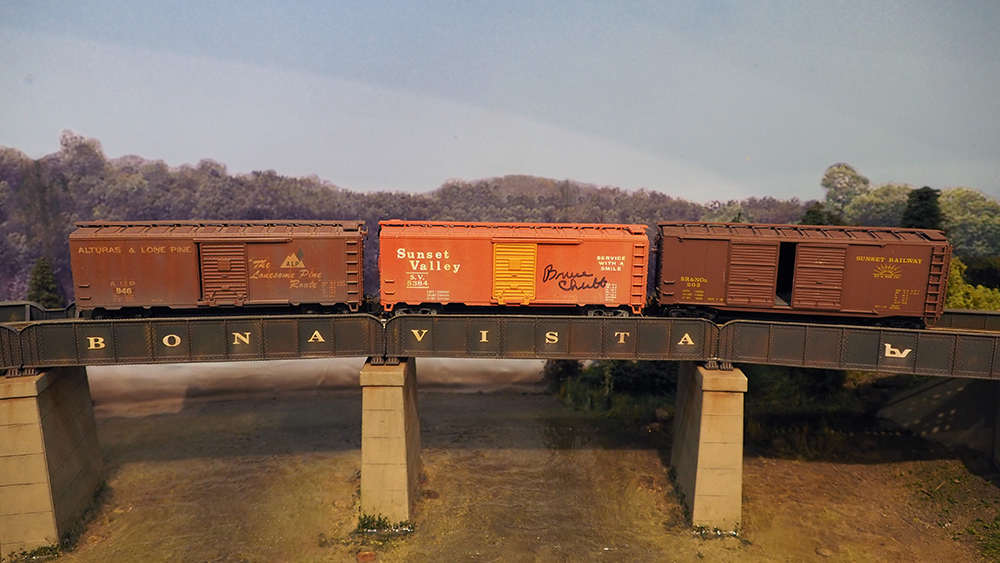
Car Swap Project Part 1: Trading models: Modelers David Popp, Gerry Leone, and Seth Puffer begin a series of projects to create custom-painted freight cars appropriate for each other’s model railroads. As David, Gerry, and Seth find out during the adventure, this is something fun and easy to do for any group of friends who […]
Read More…
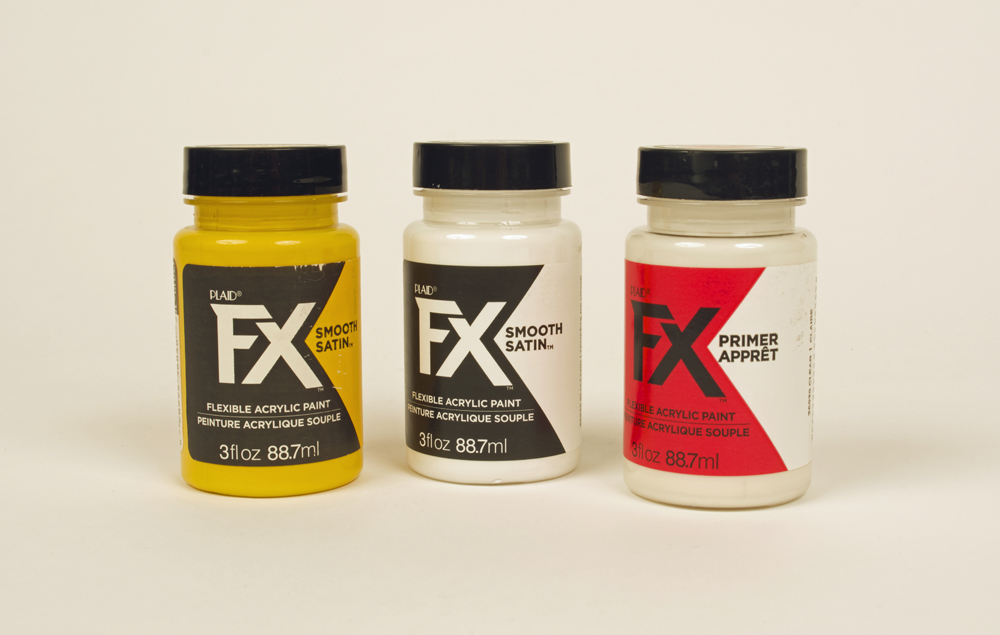
Plaid FX flexible acrylic paint. Last week my wife needed to make a stop by the local Hobby Lobby to get some supplies for her classroom. While my wife and daughter were busy shopping, my son and I walked through the rest of the store. I’m always on the lookout for potential modeling products, and […]
Read More…
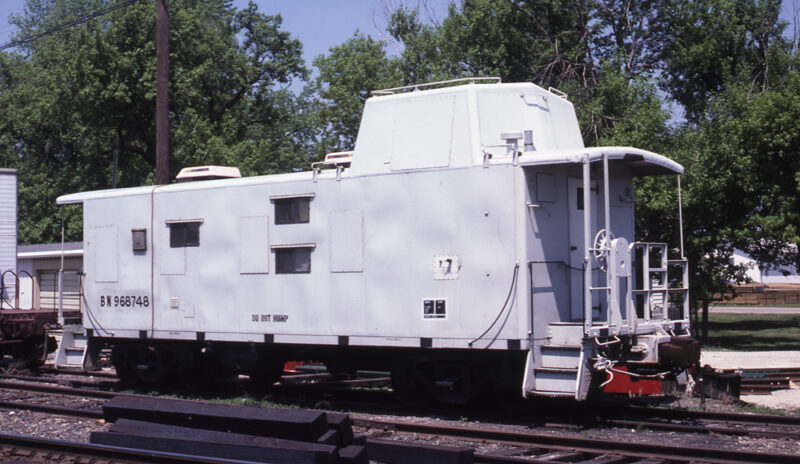
Kitbashing is a facet of the hobby many model railroaders enjoy. Full-size railroads modify equipment, too. As I was combing through my photo collection and images in our David P. Morgan Memorial Library, I found five Burlington Northern kitbashes. Hopefully one or more of these cars will inspire your next modeling project. Want more Burlington […]
Read More…
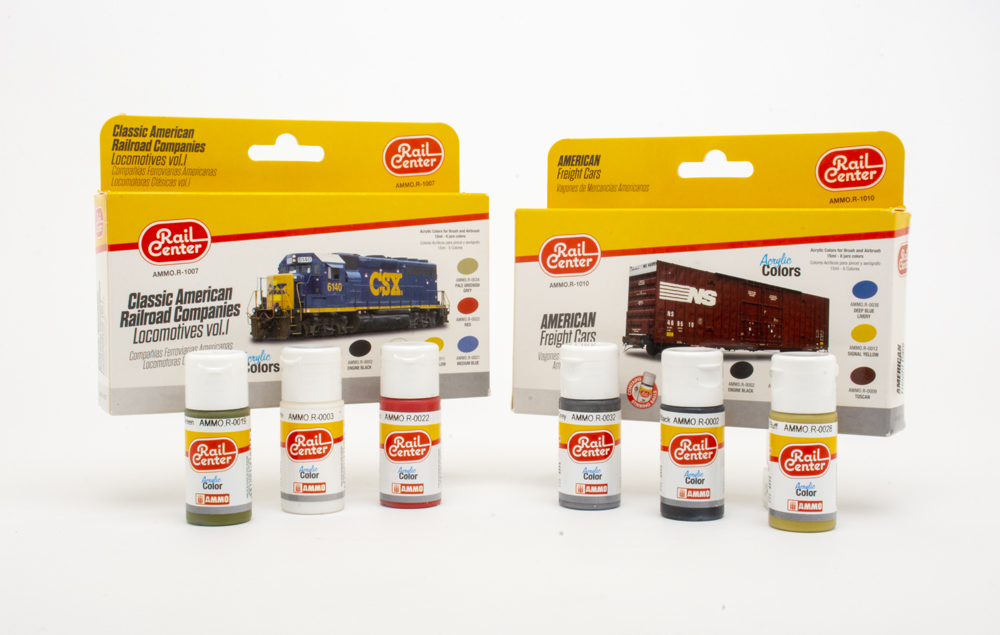
The Rail Center acrylic hobby paints line has joined the model railroad marketplace. Ammo by Mig Jimenez, a Spanish paint manufacturer, recently unveiled its new line of railroad colors. The paints are sold in 17ml plastic bottles with a flip-top lid and metal stirring ball. The colors can be applied straight from the bottle with […]
Read More…
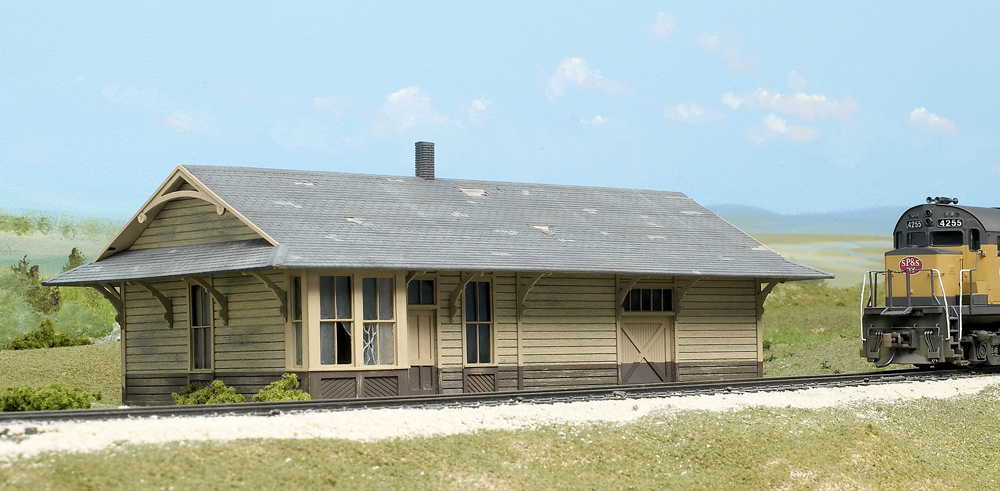
Model a weather-beaten wood structure: In model railroading, weathering is typically associated with freight cars and locomotives. However, structure weathering is another way to add realism to a layout. Peeling and faded paint, a roof in need of repair, and broken glass are just a few of the ways to turn an ordinary structure into […]
Read More…

Using cosmetic applicators for weathering: When I asked my wife if we could walk through the cosmetic department at the local drugstore, she gave me a puzzled look. However, this part of the store is home to some fantastic weathering tools, including foam-tipped cosmetic applicators. I used the applicators to simulate rust and paint wear […]
Read More…
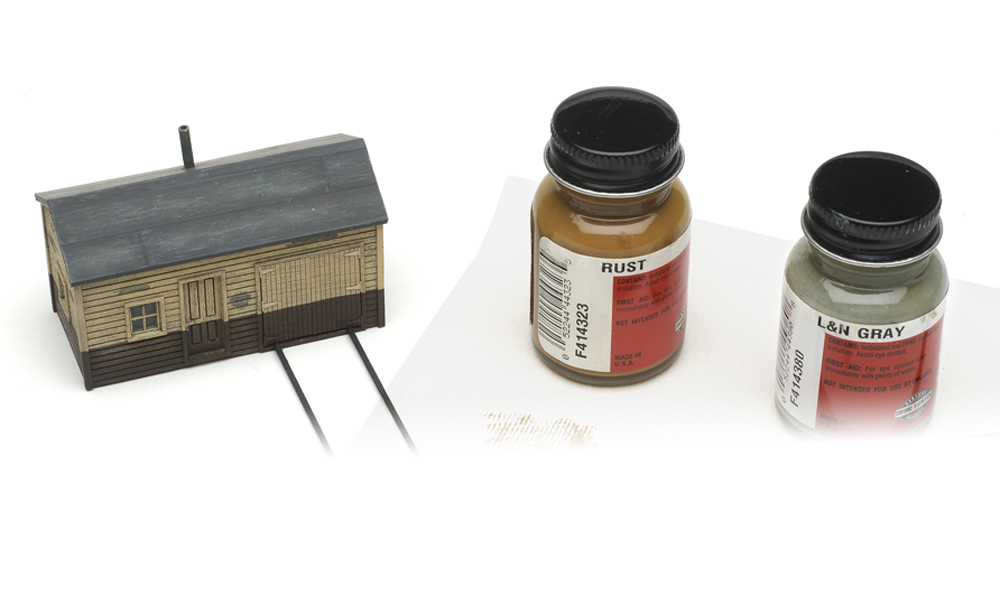
Weathering structures with drybrushing: Drybrushing is one of the easier weathering techniques in modeling. I’ve used this technique for years on structure roofs, such as this HO scale motor car/work shed produced for the Northern Pacific Ry. Historical Society. However, I’ve also used drybrushing successfully to weather locomotive truck sideframes (covered in the April 2010 […]
Read More…
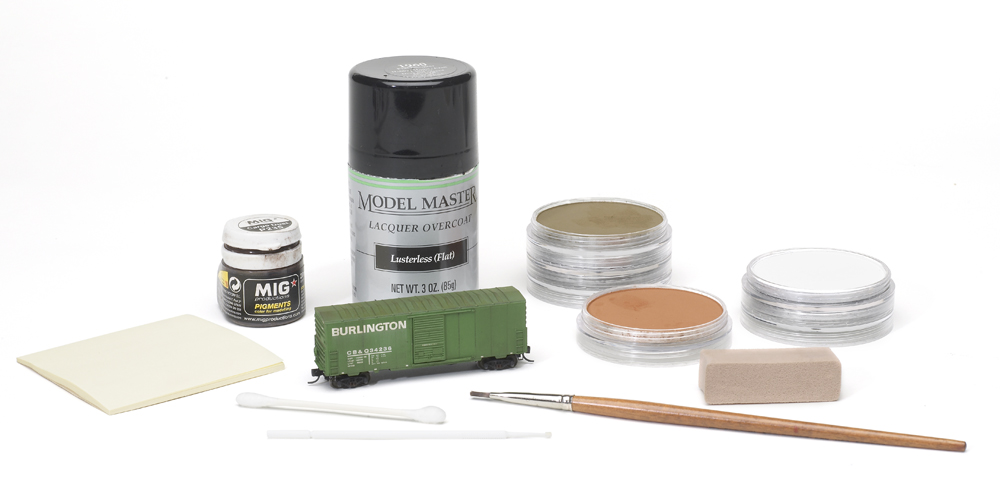
How to weather with powdered pastels: Powdered pastels have long been a popular choice for weathering locomotives, freight cars, and buildings. There are several firms that offer ready-to- use weathering powders, or you can make your own by scraping pastel sticks with a hobby knife. I started work on this N scale Micro-Trains boxcar by […]
Read More…
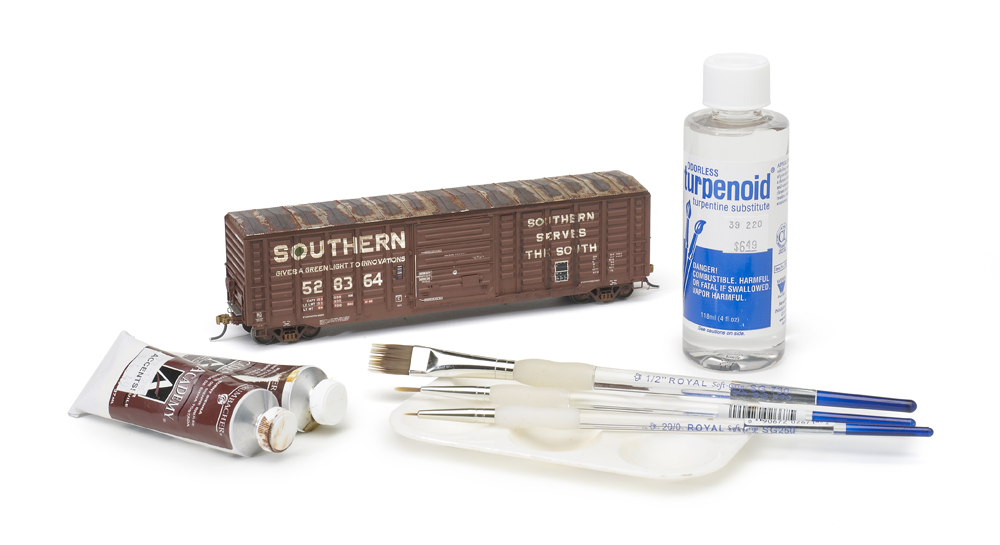
Weathering with artist’s oils: Artists’ oils make it easy to apply weathering washes and simulate rust patches, which I did on this HO scale ExactRail boxcar. First, I put some burnt umber on each body panel and on the door. Then I touched the paint with a 1 ⁄2″-wide paintbrush soaked with Turpenoid (an odorless turpentine […]
Read More…












